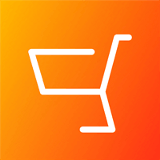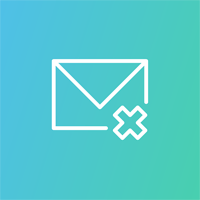Making the Most out of Email Today

By Jeremy Hogan, Senior Manager of PR and Digital Content at Celtic Chicago
For years, marketing experts have tried to predict when email will "die"¬ù as a viable medium, and what channel(s) will ultimately replace it.
The assumption was that social media and messaging platforms would overtake email as the primary means of communication, particularly given the preferences of millennials, and the rise of mobile devices.
While the list of communication channels is longer, and smartphone usage higher than ever before (and growing by the day), a new study suggests email isn't going anywhere just yet. In a study released in Aug. 2015, Adobe reported that Americans spend up to six hours per day checking email. This included time both at and away from the workplace, and it was shown to occur during a range of activities including watching television, lying in bed and even using the restroom.
With American workers and consumers still devoting such a high percentage of time to email, here are some important considerations for marketers:
Keep email in the marketing mix
Regardless of what assumptions Internet professionals may have about email's use now or in the future, the numbers clearly show it remains a primary source of information.
Email can still serve as a valuable mechanism for delivering a brand's message to a targeted audience, so companies small and large need to keep it in mind when planning their next marketing initiative.
10 Need-to-Know EMAIL MARKETING STATS
+ The top three uses of email are newsletters (66 percent), promotional content (54 percent) and welcome series emails (42 percent). -Salesforce
+ Ninety-one percent of consumers check their inbox at least once per day. -Salesforce
+ One-third of marketers say their subscribers read emails on mobile devices at least 50 percent of the time. -Salesforce
+ Forty-seven percent of emails are now opened on a smartphone. -Movable Ink
+ Twenty percent of marketers say their company's primary revenue source is directly linked to email operations. -Salesforce
+ For 69.7 percent of U.S. Internet users, email is the preferred method of communicating with businesses. -eMarketer
+ Sixty-one percent of consumers say they like to receive promotional emails weekly and 28 percent want them even more frequently. -MarketingSherpa
+ The top three metrics used to track email marketing success are click-through rates (47 percent), conversion rates (43 percent) and click-to-open rates (38 percent). -Salesforce
+ Two-thirds of companies would like to improve their personalization (64 percent), marketing automation (64 percent) and segmentation (62 percent). -Econsultancy
For more insights into email marketing, visit
Companies will want to assume their audience will be viewing their message on a smartphone, and plan the layout accordingly - avoiding excessive load times required by large images, and keeping all content in a single-column format that fits within a standard mobile phone screen (discover the basics of mobile-optimized email at wsm.co/mobilebasics).
Once a message's content and layout have been optimized for today's audience, one key step remains.
Keep your website current
The primary goal of an email blast is to drive traffic and spur a specific action once a recipient is on the brand's website (the same as any digital marketing effort one might employ) - not only requiring marketers to convey the value of clicking through to a site, but also participate in some website upkeep. With heightened awareness and prompts to visit a site, marketers should ensure that there is relevant and engaging content of interest to their audience once they are there. Further, if an e-blast promotes a specific offer or product, it should be the first information a reader sees after clicking through. The digital landscape is continually shifting, and it can be difficult to manage the countless ways people are receiving their content. The devices and platforms used today might be significantly different five years from now, creating challenges for marketers looking to stay ahead of the curve.
What we do know is that today's audience is still very much dependent on email for staying connected, in spite of any assumptions we might have had to the contrary. It is important that marketers embrace this fact, and strive to deliver meaningful content their audiences want in a format they can easily access and read.
Jeremy Hogan is a senior manager of PR and digital content with Celtic Chicago, a full-service marketing firm.










